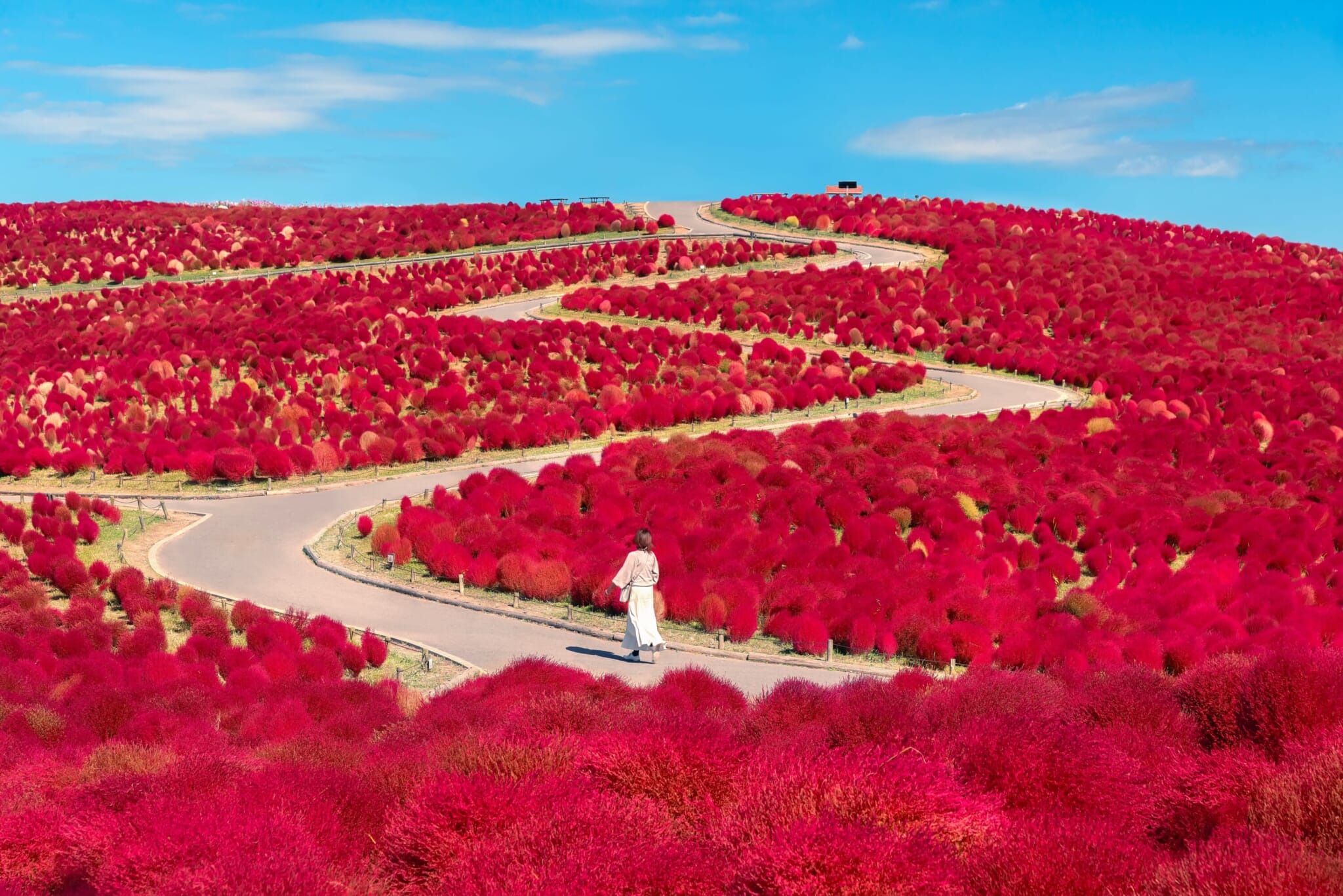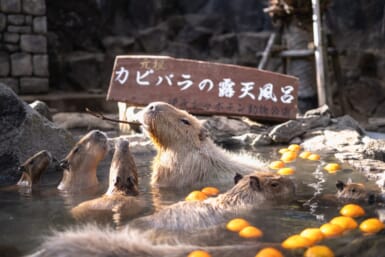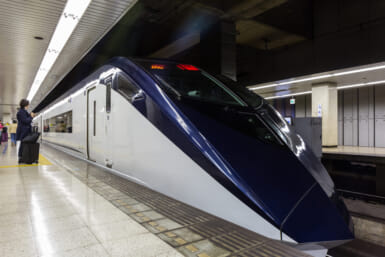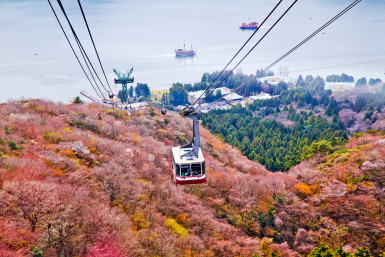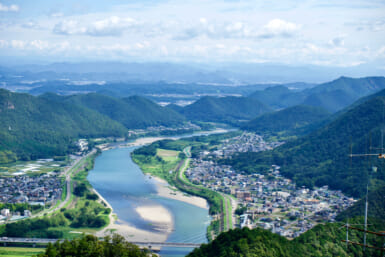For those who complained all September long about the intense heat and humidity, the delay in peak fall foliage periods across Japan this year feels like an extra punch in the gut. After all, residents and travelers alike look forward to the magnificent beauty of maple and ginkgo leaves for months, venturing to even the most crowded temples and parks to frolic under a halo of jewel tones. Never fear — there’s still a plethora of natural wonders to enjoy before the beloved fall-leaves duo arrives in late November and early December.
One such wonder is the kochia bush, also known as summer cypress. Despite its name, this delightfully fluffy Seussian plant reminiscent of the truffula trees from The Lorax is most admired during the autumn when its needle-like leaves gradually transform from lime green to bright red. Unlike some ephemeral seasonal flora, kochia can be enjoyed from mid-July to early November as they shift from green to red to golden brown.
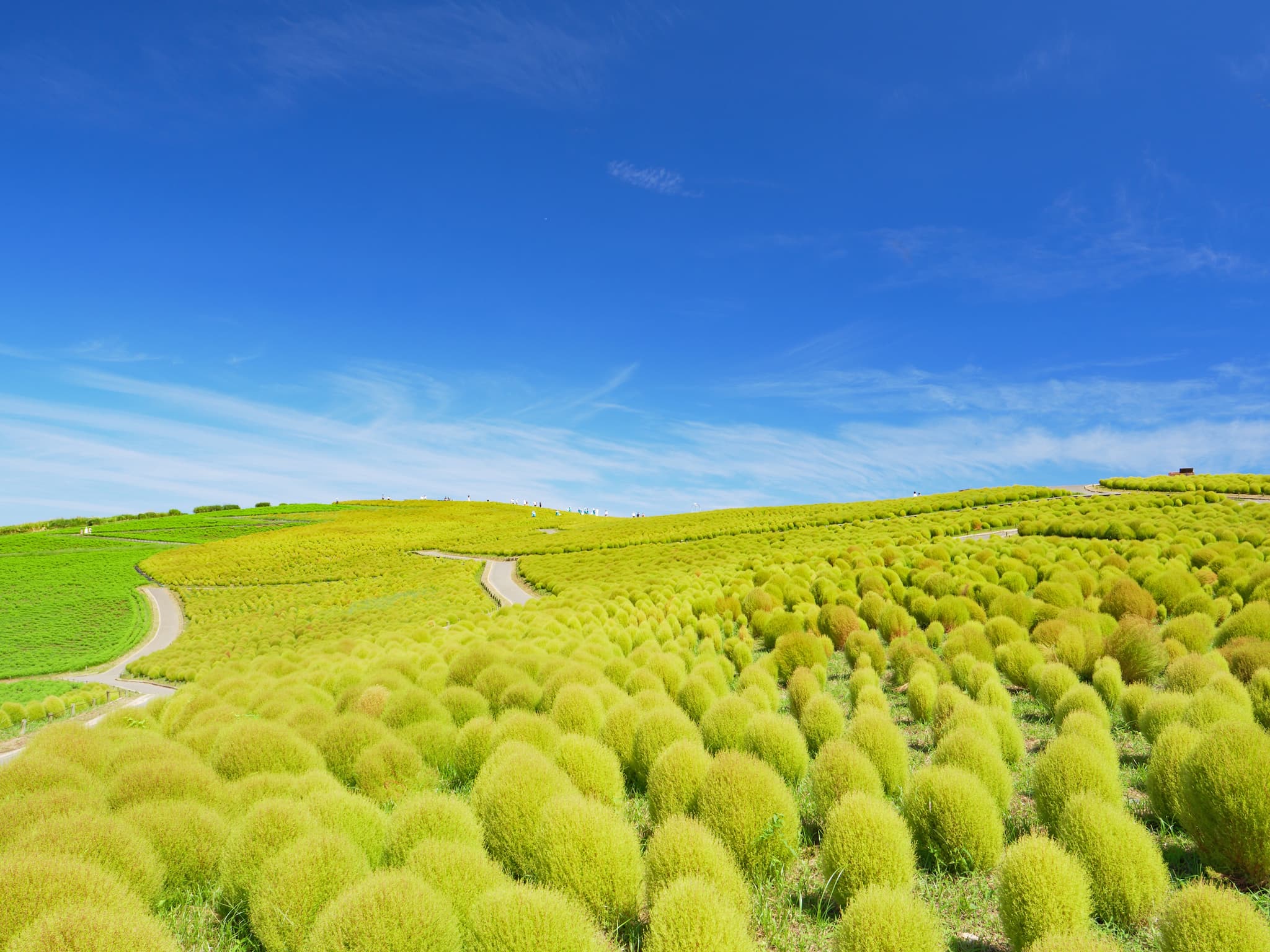
Green kochia bushes during the summer
The kochia plant is native to dry lands in Eurasia, though it’s also found in parts of North America. In Japan, kochia is sometimes referred to as hokigusa, which translates to “broom grass” or “broom weed.” The plant produces seeds called tonburi, which, in Akita Prefecture, are processed into a delicacy with a caviar-like texture that’s sometimes referred to as “field caviar” or “land caviar.”
These plants have risen in popularity in recent years thanks to their unique aesthetic appeal. Hitachi Seaside Park in Ibaraki Prefecture catapulted kochia to Instagram fame, but many other parks around Japan now feature a field of kochia for visitors to enjoy alongside other fall blooms.
Red Kochia in Hokkaido and Tohoku
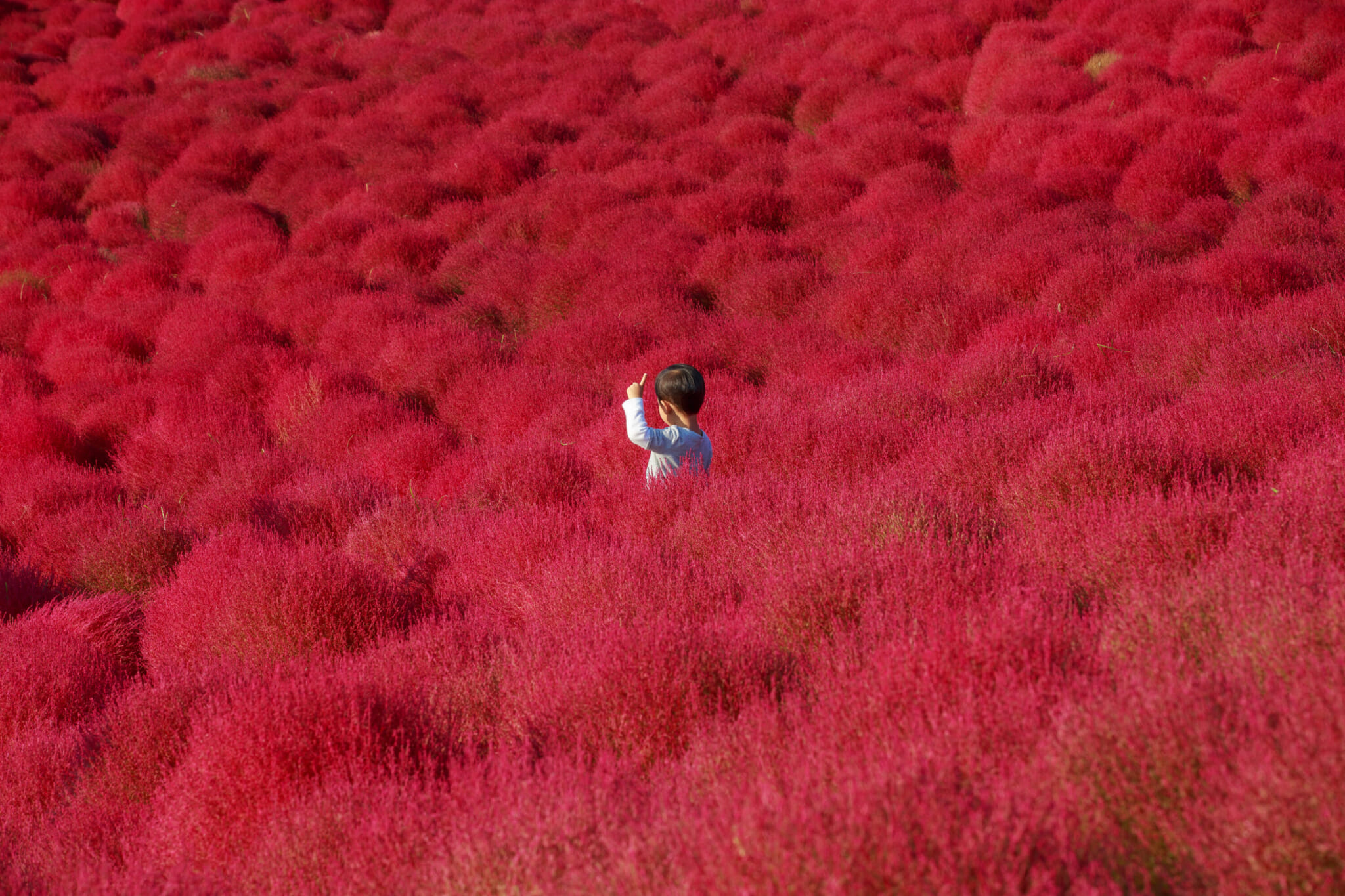
Sapporo, Hokkaido Prefecture: Takino Suzuran Hillside Park
Peak Season: mid- to late October
Takino Suzuran Hillside National Government Park, the only national government park in Hokkaido, extends over nearly 400 hectares of land. The park is separated into four zones and features forests, outdoor activity areas and learning areas. The Chushin Zone is where many of the seasonal plants are, including kochia plants, dahlias, cosmos and maple trees. It’s worth noting that Sapporo will see fall foliage earlier than other regions, which is why Takino Suzuran Hillside Park holds its fall foliage festival sooner than other areas. This year’s event takes place from October 12 to 17.
Kawasaki, Miyagi Prefecture: Michinoku Park
Peak Season: mid-October to early November
Michinoku National Government Park features playgrounds for kids, an education-focused historical village (Furusato Mura) and wildflower meadows. Along with rows of kochia, families can expect to see fields of yellow and orange cosmos flowers, as well as red maple trees around Furusato Mura.
Red Kochia in Kanto
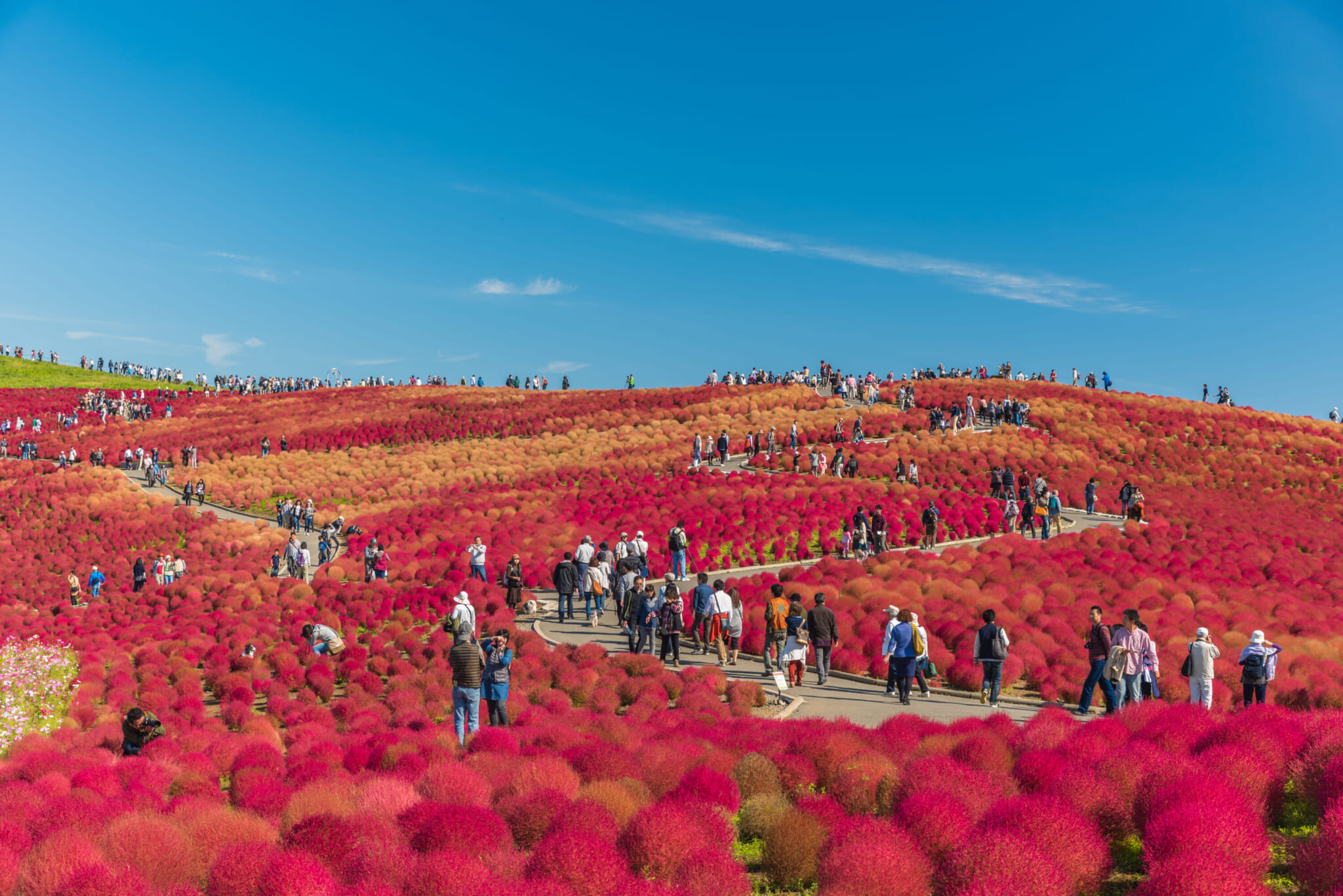
Hitachinaka, Ibaraki Prefecture: Hitachi Seaside Park
Peak Season: mid- to late October
As mentioned above, Hitachi Seaside National Government Park — well known for its ethereal sea of blue nemophila flowers in the spring — is one of the most visited locations in Japan for kochia. In particular, many Tokyo residents make a day out of visiting the park, as it’s only about one hour and 15 minutes from Shinagawa Station to Katsuta Station by limited express train. Marveling at the seemingly infinite stretch of scarlet, tourists wander the vast meadow in lines. For a fiery foliage forecast — plus a handy crowd congestion forecast — check here.
Sodegaura, Chiba Prefecture: Tokyo German Village
Peak Season: mid-October
If the crowds at Hitachi Seaside Park are too much to bear, head instead to Country Farm Tokyo German Village. Though the trip takes between two and three hours by a combination of train and bus, if you travel by car, you can be there in under an hour (depending on traffic congestion, of course). This amusement park offers a full year of seasonal flowers, plus an impressive illumination display in the winter.
Red Kochia in Chubu
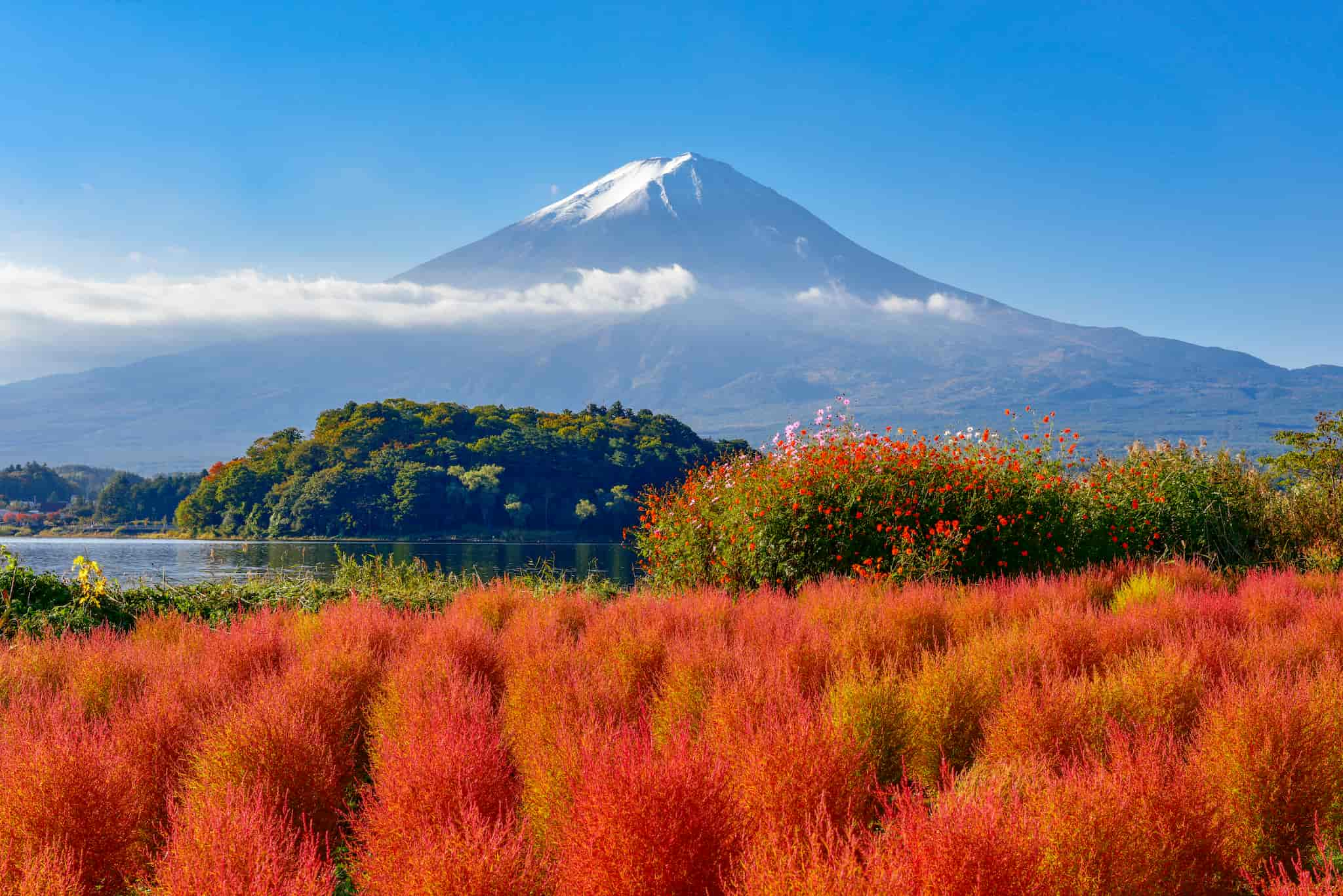
Fujikawaguchiko, Yamanishi Prefecture: Oishi Park
Peak Season: mid-October
Oishi Park is on the north shore of Lake Kawaguchi and shows off a breathtaking view of Mount Fuji, seemingly perched atop a fiery red kochia field. This picturesque spot is a photographer’s dream, and it’s ideal for those who want to enjoy the crisp autumn air while walking lakeside at a leisurely pace. The park is an easy day trip from Tokyo, with both bus and train options available.
Red Kochia in Kansai
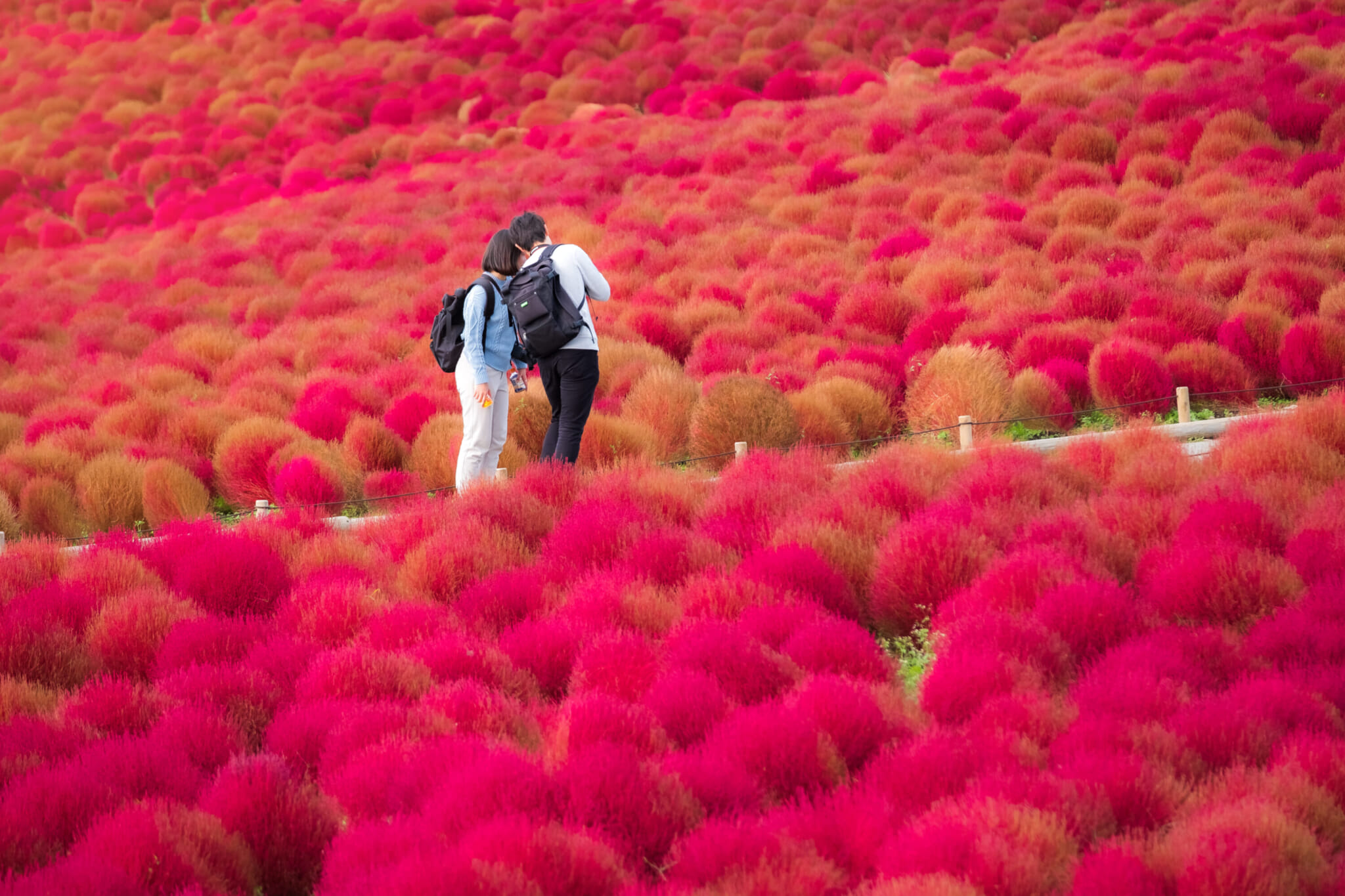
Suita, Osaka Prefecture: Expo ‘70 Commemorative Park
Peak Season: mid- to late October
Easily accessible from the city center, Osaka’s Expo ’70 Commemorative Park grows roughly 3,500 kochia bushes alongside a field of cosmos flowers and pink muhly grass. Like Hitachi Seaside Park, Expo Park gets quite crowded during peak season. If you can handle the crowds — which aren’t too unbearable — visit during the Kochia and Cosmos Festa, which in 2024 runs from October 5 to November 4. The park is right next to the LaLaport Expocity mall, so you can spend the whole day in the area.
Kobe, Hyogo Prefecture: Kobe Nunobiki Herb Gardens
Peak Season: until late October
One of Kobe’s highlights, Kobe Nunobiki Herb Gardens and Ropeway is located within walking distance of Shin-Kobe and Kobe-Sannomiya stations. Enjoy the view out over Kobe and Osaka Bay as you ride the ropeway up to the observation deck at the top station, then gradually descend the hill among various fragrant seasonal flowers and herbs. While this garden doesn’t have as many kochia as Expo Park, its convenient location, autumn festivals and famous night views make it a must-visit spot.
Red Kochia in Shikoku and Chugoku
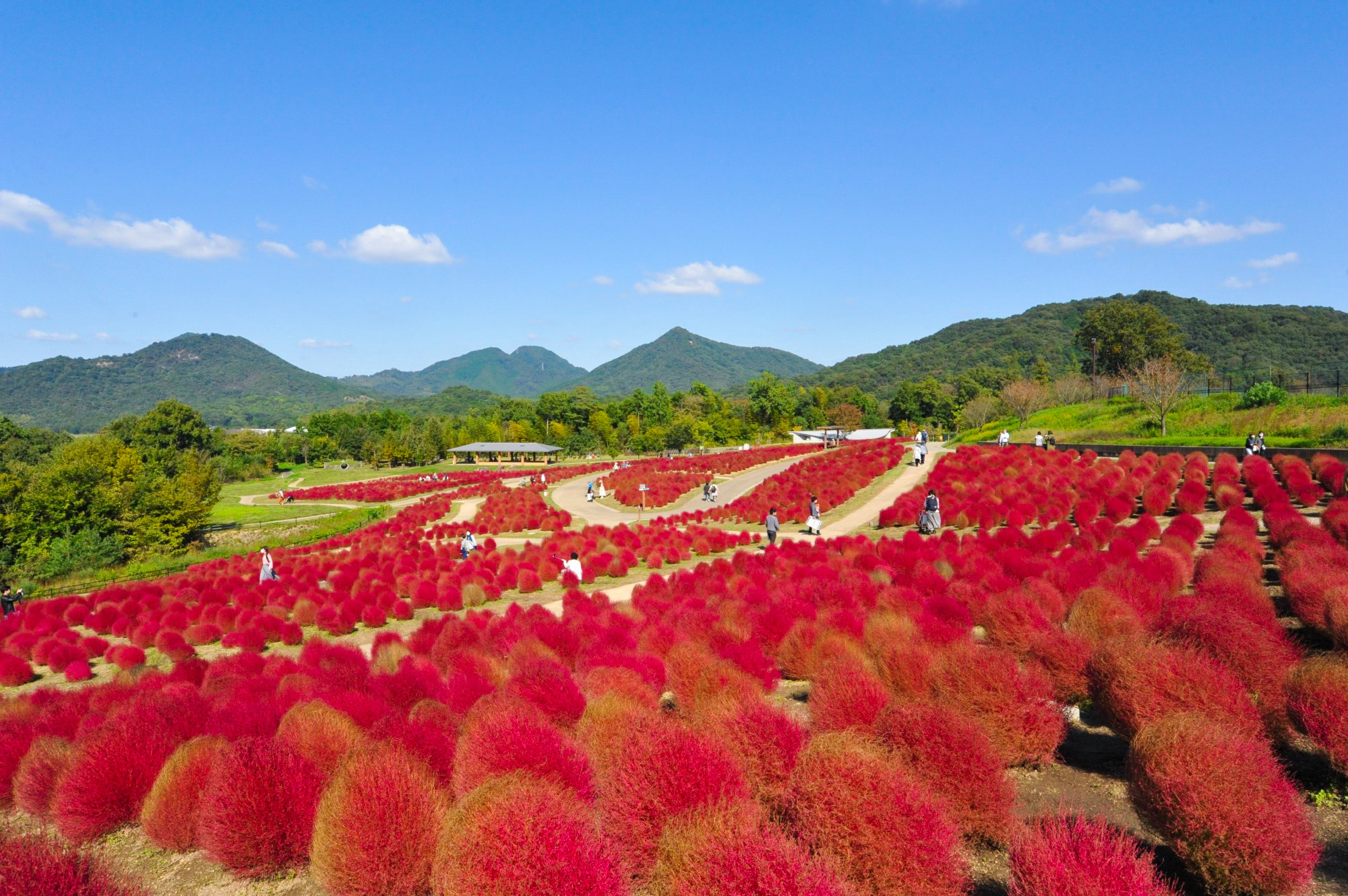
Courtesy of Sanuki Manno Park
Manno, Kagawa Prefecture: Sanuki Manno Park
Peak Season: mid-October
The sprawling Sanuki Manno National Government Park, featuring a waterfall, bamboo forest, cycling course and campground, is the only national government-run park in Shikoku. The 6,000 kochia bushes planted here have just started to change color and will transform from bright red in mid-October to red-brown in late October. Until October 27, the park will operate a free shuttle bus service from JR Kotohira Station and Kotoden-Kotohira Station.
Sanyo-Onoda, Yamaguchi Prefecture: Hana no Umi
Peak Season: mid- to late October
Yamaguchi Prefecture’s Hana no Umi, whose name translates to “sea of flowers,” is one of western Japan’s largest agricultural farms. In addition to its vast “sea” of seasonal blooms, the farm provides visitors with fruit and vegetable harvesting experiences. Outside of fall’s kochia season, we recommend visits in winter and spring for strawberry picking and in summer to see the farm’s stunning display of 700,000 sunflowers.
Red Kochia in Kyushu
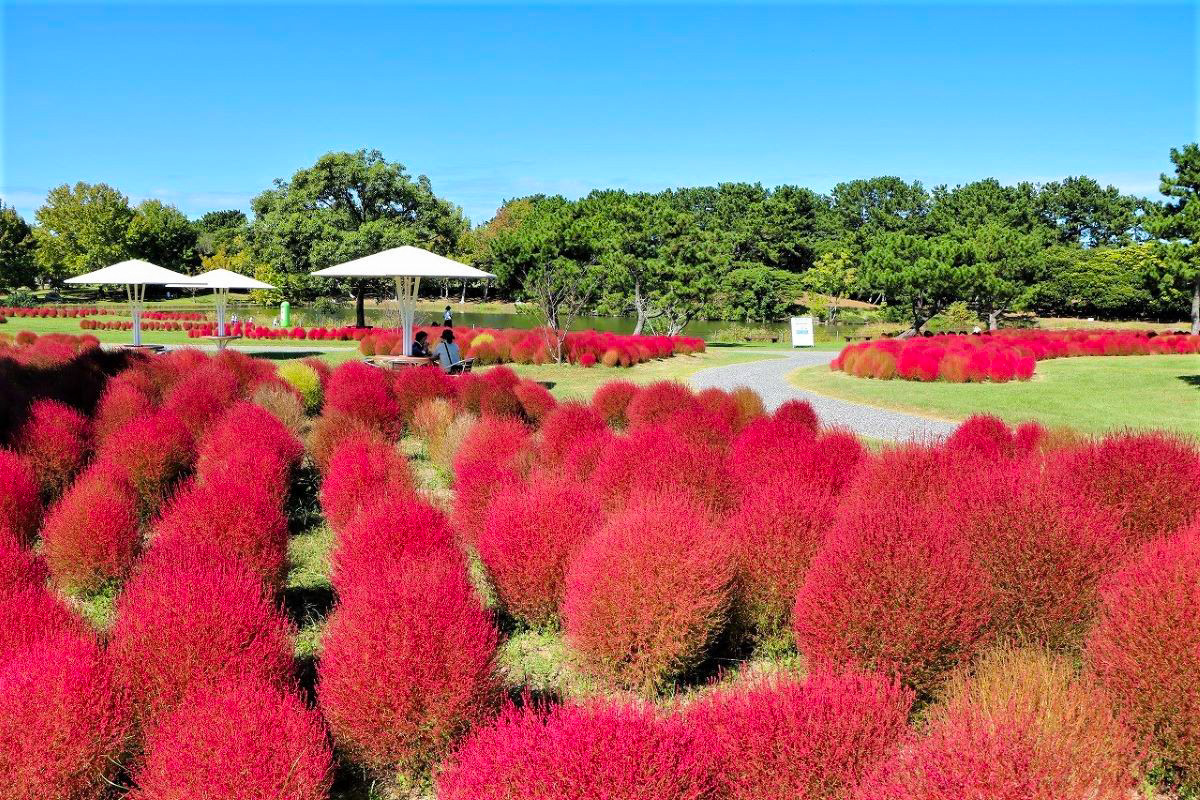
Courtesy of Uminonakamichi Seaside Park
Fukuoka, Fukuoka Prefecture: Uminonakamichi Seaside Park
Peak Season: mid- to late October
At Fukuoka Prefecture’s Uminonakamichi Seaside National Government Park, you can enjoy some 2,000 kochia plants and 1 million cosmos flowers. The park is great for animal lovers and children, as it lets visitors interact with capybaras, kangaroos and red-faced spider monkeys. You can even try your hand at horseback riding in the park. If flower-viewing is your main goal, aim for the west entrance, an approximately 10-minute walk from JR Saitozaki Station.

